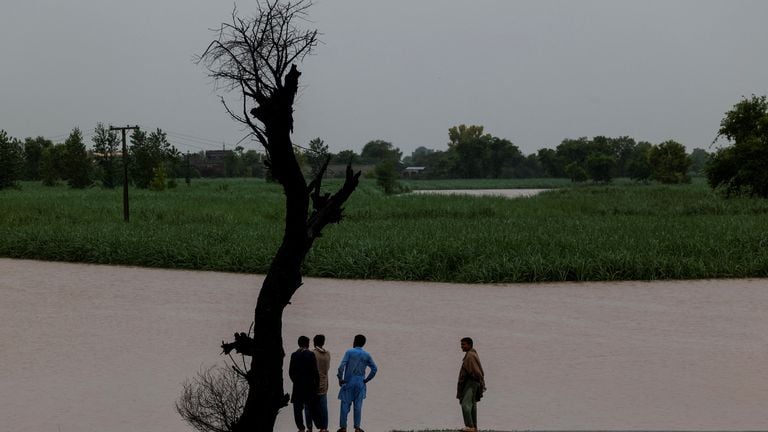Pakistan has formally apprised the International Monetary Fund (IMF) of the staggering Rs. 371 billion in economic losses caused by recent floods, which have battered the country’s infrastructure and agriculture sectors and forced a downward revision in the nation’s growth targets.
According to official sources, the Ministry of Finance briefed the visiting IMF review mission on the scale of devastation, noting that the government’s original real GDP growth target of 4.2% for the current fiscal year, approved by the National Economic Council and Parliament, will now be revised down to 3.9% for FY2025-26. The revision reflects a 0.3 percentage point reduction, directly attributed to the widespread destruction wrought by the floods.
Flood Impact: Human and Economic Toll
The floods, which affected 52 districts and displaced an estimated 2.5 million people, have left a trail of destruction across the country. Official figures reveal 1,006 deaths, 1,063 injuries, and damage to 12,569 homes. Infrastructure losses are extensive: 2,133 kilometers of roads, 248 bridges, and 866 water supply systems have been damaged nationwide. The education and health sectors have also suffered, with 1,098 schools and 128 health facilities affected, alongside 3.26 million acres of crop area.
Province-wise, Balochistan bore the brunt of household destruction, with 5,086 homes damaged, followed by Khyber Pakhtunkhwa (3,222), Azad Jammu & Kashmir (2,017), Gilgit-Baltistan (1,260), Punjab (238), Sindh (281), and Islamabad Capital Territory (65). Road infrastructure losses were most severe in Punjab (1,216 km), with significant damage also reported in KP, AJK, and other regions.
The livestock sector lost nearly 11,000 animals, while commercial areas, public buildings, and mines also sustained heavy damage.
Agriculture and Industry: Setbacks and Revised Projections
The agriculture sector, a mainstay of Pakistan’s economy, has been hit particularly hard. Losses in important crops are estimated at Rs87 billion, with overall agricultural losses at Rs155 billion. Cotton production, initially projected at 10.2 million bales, is now expected to fall to between 8 and 8.7 million bales. Wheat and sugarcane outputs are also forecast to decline, with wheat production losses estimated at up to 1.3 million tons and sugarcane output expected to drop by as much as 4.3 million tons.
As a result, agriculture sector growth is now projected at 4% for the current fiscal year, down from the earlier target of 4.5%. Growth in important crops is expected to fall from 6.7% to 4.5%. The industrial sector’s growth forecast has been trimmed from 4.3% to 4.2%, while the electricity, gas, and water supply sector is now expected to grow by just 2.9%, down from 3.5%. The services sector growth estimate has also been revised downward, from 4% to 3.7%.
External Financing and Bond Market Plans
During discussions with the IMF, the Ministry of Finance outlined Pakistan’s external financing needs for the current fiscal year at $26 billion, with $12 billion expected to be rolled over. Officials cited previous commitments from China’s ambassador to ensure the timely rollover and refinancing of Pakistan’s obligations.
Pakistan also informed the IMF of its intention to re-enter the international bond market, with plans to launch a Panda bond in China in November, targeting $250-300 million, followed by a second tranche in April 2026. The government is considering a Eurobond issuance in the last quarter of FY26, contingent on a further reduction in US Federal Reserve policy rates and an improvement in Pakistan’s international credit rating. The country has already repaid $500 million in Eurobond maturities in September 2025, with another $1 billion due by April 2026.
On the external front, the State Bank of Pakistan purchased over $500 million from the interbank market in June 2025, with total purchases for reserve buildup reaching $7.7 billion.
Federal Finance and Revenue Minister Muhammad Aurangzeb expressed satisfaction with the ongoing engagement with the IMF, emphasizing that the government is actively assessing flood damages and will submit a comprehensive report to the Fund to seek further relief and adjustments.

